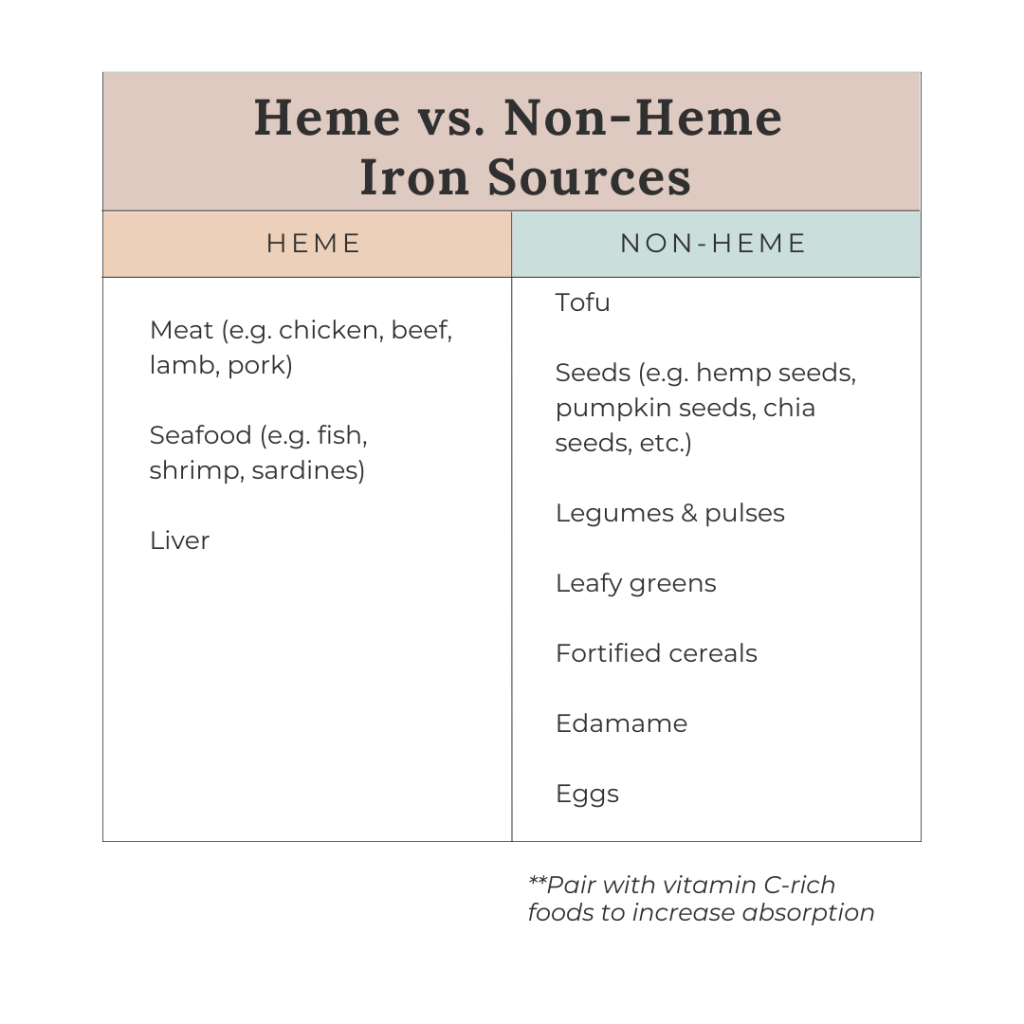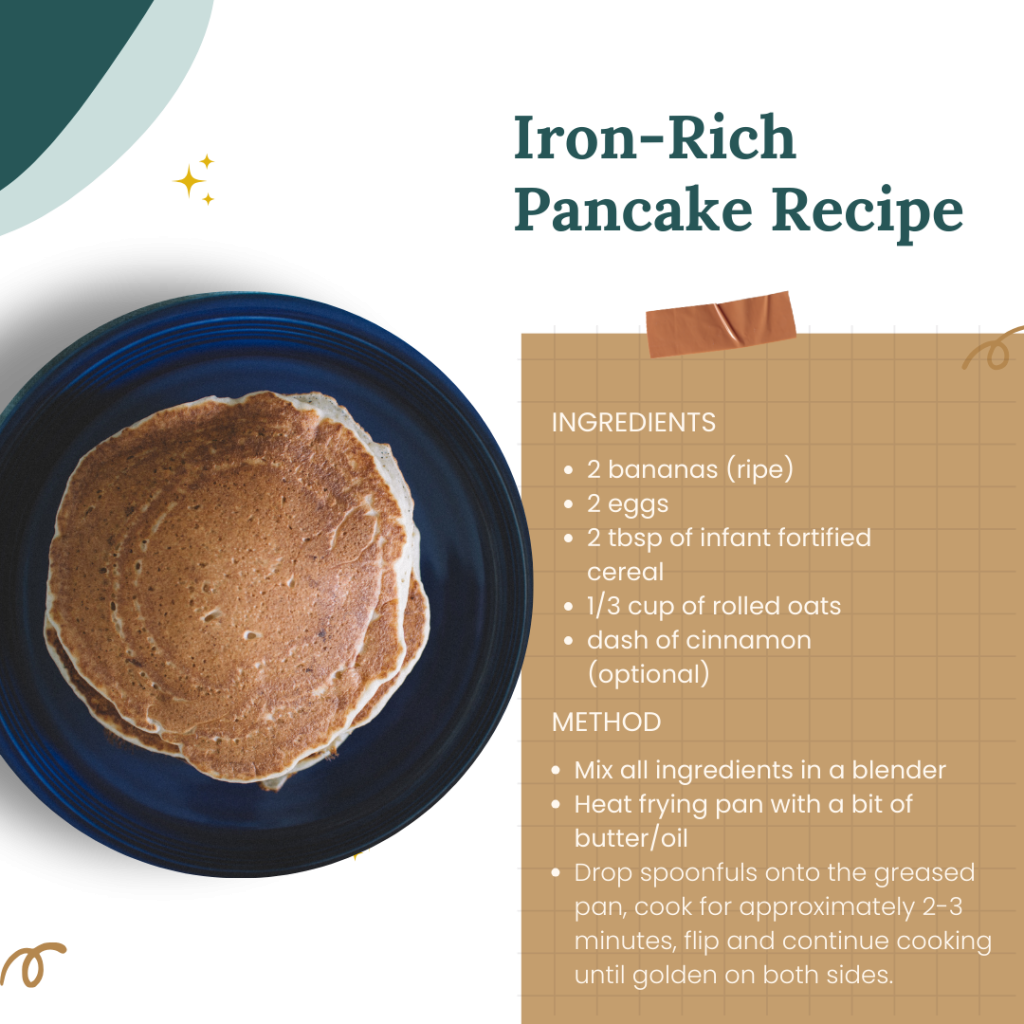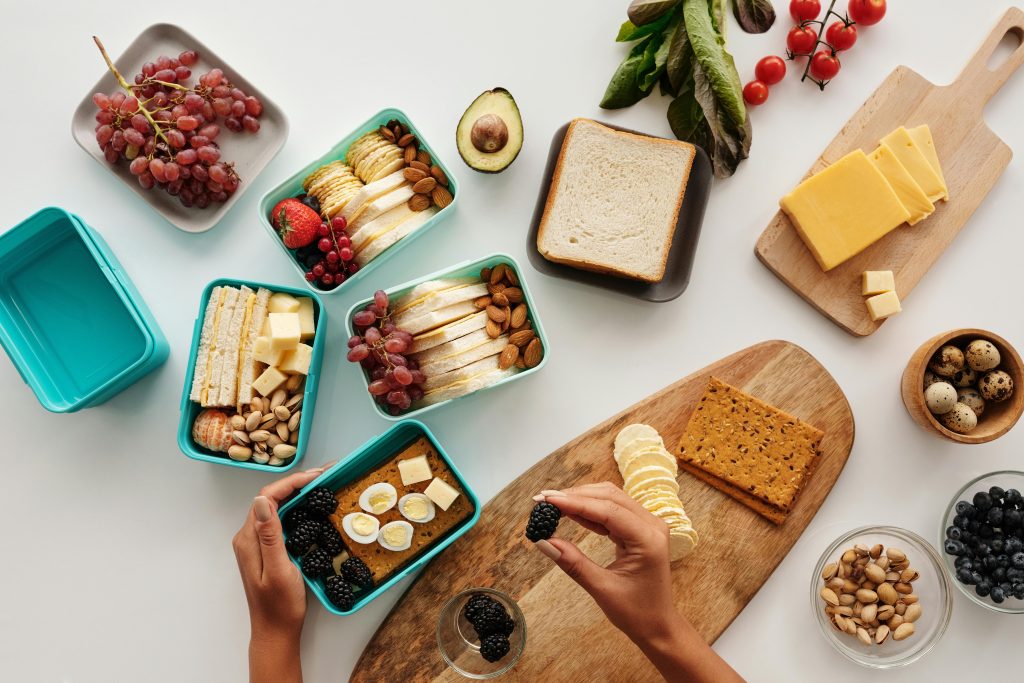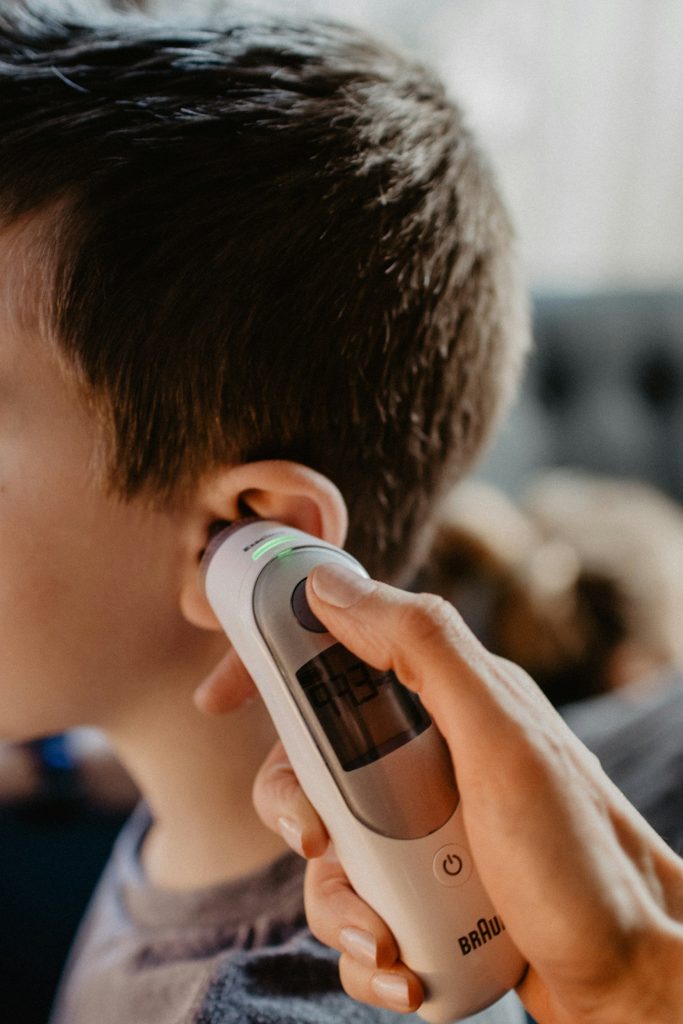Written by Eliy Lirange and reviewed for accuracy by Soleina Karamali, RD
What is iron?
Iron is an important nutrient in the diet. It aids in the production of hemoglobin, which is a protein found in red blood cells that helps carry oxygen around the body. The whole body needs oxygen to function, making hemoglobin and iron especially important. In infancy, iron is important for brain development and growth.
Why is iron especially important when…
Starting solids:
While in utero, full-term newborns have built sufficient iron stores to support their requirements for the first six months of life. After this, external sources (aka solids!) become necessary to meet iron recommendations. Including iron-rich sources in an infant’s diet will replenish their iron stores and aid further growth and development.
Pregnant:
Iron is also especially important prenatally. During pregnancy, maternal blood volume increases to supply the fetus with oxygen. When blood volume increases, there is an increased need for the protein we mentioned earlier – hemoglobin! If there is more hemoglobin needed that means there is more iron needed. Pregnant women need 27mg of iron per day (compared to 18mg in non-pregnant women).
Tip: Prenatal vitamins provide iron and other vitamins and minerals to the maternal diet for optimal fetus growth and development and maternal health. Look for a prenatal vitamin that provides at least 16-20mg of iron per day.
Where does iron come from?
Iron has two forms: heme iron and non-heme iron. Heme iron comes exclusively from animal products, while non-heme iron is present in both animal and plant-based foods.
Heme iron is easier for our body to absorb. Heme iron is present in meat products (chicken, beef, lamb, pork), seafood (fish, shrimp, sardines), and liver.
Non-heme iron in plant-based foods can be inhibited or “hidden” by other components of the food. However, plant-based iron sources are still a great option as they provide iron along with other nutrients like fibre! Non-heme iron sources include tofu (soybeans), seeds (hemp seeds, pumpkin seeds, chia seeds, flax seeds), legumes and pulses, dark leafy greens (spinach, collards), edamame, eggs, or fortified foods.
Foods can also be fortified with iron, meaning iron is added to the food through processing. White flour, packaged cereals, and infant cereals are all fortified with iron in Canada.

TIP: To enhance iron absorption from plant sources, you can also pair the food with a source of vitamin C i.e. citrus, strawberries, or tomatoes.
How do I know my child is getting enough iron?
There is no need to calculate how much iron your baby is receiving. When introducing solids, the goal is to offer a variety of iron-rich foods with each meal so your baby becomes familiar with the taste, texture, and flavour of these foods and has an opportunity to have an iron source at every meal.
Tip: Make sure your baby is ready to be introduced to solids, and you are too! Learn how, when, and what foods to start with. Book a session with our registered dietitian and/or occupational therapist to learn about the ins and outs of introducing solids!
Need some inspiration? Check out our iron-rich pancake recipe for an easy baby-led weaning idea!

Still have questions?, Book a 1:1 Discovery Call with our dietitian! We are here to help!



